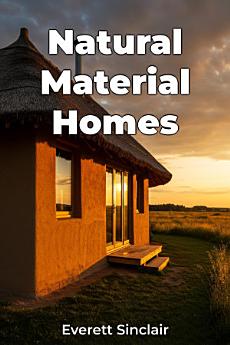Natural Material Homes
About this ebook
The book highlights intriguing facts, such as the inherent thermal properties of materials like earth and timber, which naturally regulate temperature and humidity, reducing the need for energy-intensive cooling systems. Additionally, it delves into vernacular architecture, revealing how traditional designs have effectively provided comfortable living environments for centuries across diverse climates.
The book bridges the gap between traditional knowledge and modern building practices, presenting information in an accessible manner for architects, builders, and homeowners alike. It progresses by first introducing the fundamentals of thermal comfort and the environmental impact of conventional materials. Following this foundation, the book examines specific natural materials like adobe, rammed earth, timber framing, hempcrete and straw bale, analyzing their thermal performance and environmental impact. The later chapters investigate case studies of vernacular architecture and explore the integration of these techniques with modern design.








